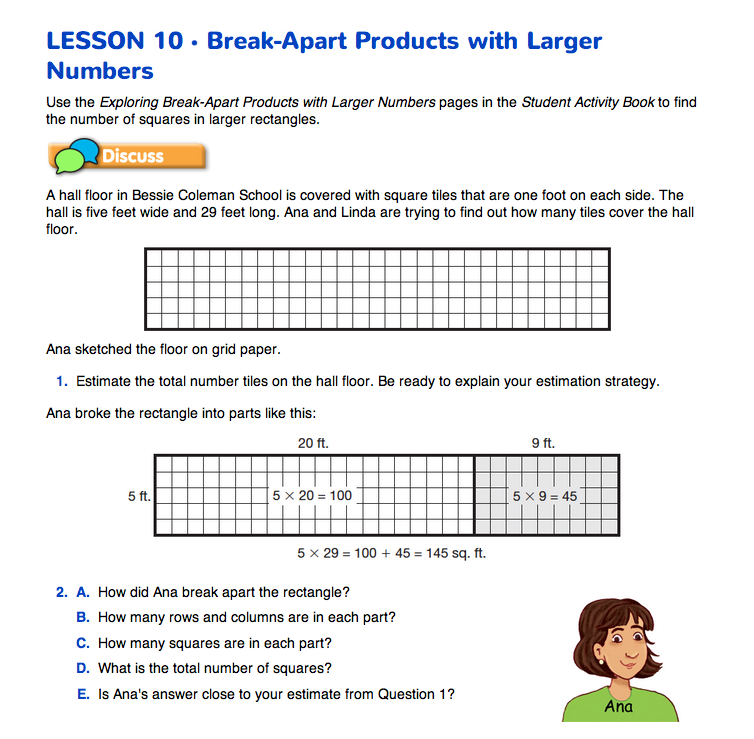Break-Apart Products with Larger Numbers
Est. Class Sessions: 2–3Developing the Lesson
Part 2. Represent Break-Apart Products
Direct students' attention to the Break-Apart Products with Larger Numbers pages in the Student Guide, Question 1.
Ask:
Have student pairs discuss Question 2. Talk with students to be sure that they can match Ana's number sentences with the picture.
Ask:
For Question 3, students compare Ana's rectangle with a grid to Linda's sketch without a grid. As pairs discuss the questions, check to see that they understand that the 5 still represents the number of squares along the width and that 20 and 9 represent the number of squares along the length of the parts. The numbers 100 and 45 represent the number of squares in each part, and they are added together to find the total.
Students practice using rectangles to represent the break-apart method in Question 4. They consider a mental math strategy for one problem in Question 5. For example, students may visualize dividing a 5 × 42 rectangle into two equal parts for Question 4D. Then mentally calculate:
5 × 21 = 105
105 + 105 = 210













